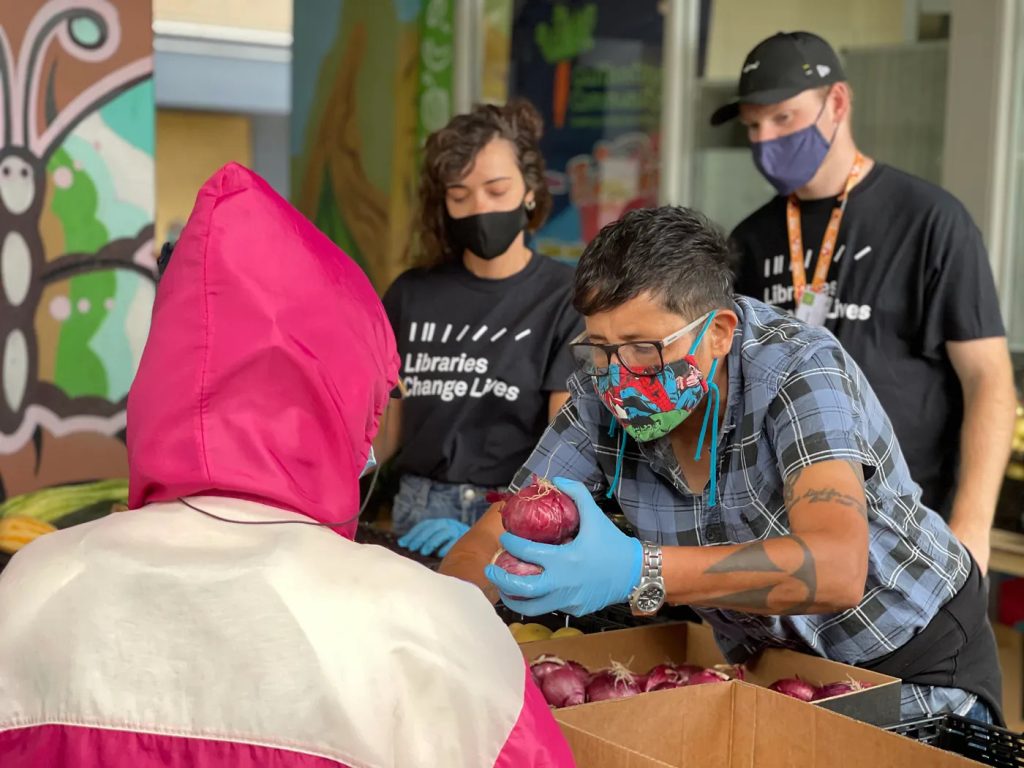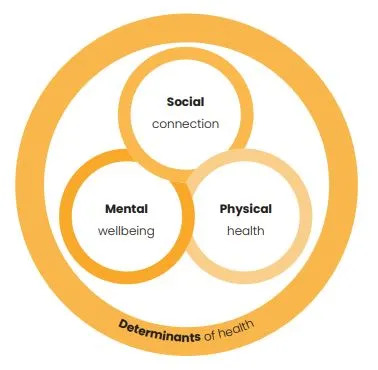Better serving our communities and reaching everyone as @Michael noted in The Heart of Librarianship (2014) involves bridging the physical and virtual planes by “using technology to offer new ways to interact with the library” (p. 41). But before that, we need to explore resources that provide our patrons with trauma-informed care through “qualities such as empathy, emotional intelligence, and reflective action” emanating through everything we do (Garcia-Febo, 2018).

Photo by Lina Trochez. Sourced from Unsplash (2017, September 14).
Libraries serving not only their patrons’ informational needs, but their basic mental and physical health needs too is, unfortunately, news to me. But reading about “Healthy Library, Healthy Life” (2022) and discovering the efforts librarians, like Cory Greenwood, have made at State Library Victoria to support their patrons’ health and well-being, worsened by the pandemic, is truly commendable. By creating the first strategic framework designed for public libraries to utilize globally, major libraries should follow suit and expand their crucial role as central figures representing and serving their communities and their rudimentary needs.

Sourced from Medium (2022, December 5).
Hopefully, in the future, it will become the norm for librarians to assist their community members in distress by building library-health partnerships across various community groups and health organizations in addressing patrons’ “social connection, mental wellbeing and physical health” (Greenwood, 2022).

Sourced from Medium (2022, December 5).
Institutions enhancing this framework with emerging technological tools will be in a better position, “to support the development of healthy minds, healthy bodies and healthy communities, with a focus on prevention over cure, connection over isolation and collaborations that break down silos and amplify results” (p. 24).
I absolutely LOVE this quote for many reasons; most of all is Greenwood’s emphasis on “prevention over cure” which I resonate with deeply. One of my many life mottos is to be as conscious as possible in every present moment; for doing so will inevitably reduce the number of mistakes and regrettable actions our egos are prone to making when we are operating within default mode.
References
Garcia-Febo, L. (2018, November 1). Serving with love: Embedding equality, diversity, and inclusion in all that we do. American Libraries. https://americanlibrariesmagazine.org/2018/11/01/serving-with-love/
Greenwood, C. (2022). Healthy library, healthy life. INCITE 43(6), 24. https://287.hyperlib.sjsu.edu/wp-content/uploads/2023/02/Healthy-Library-Healthy-Life.pdf
Greenwood, C. (2022). Libraries for health & wellbeing: A strategic framework for public libraries. Medium. https://hohkyo.medium.com/libraries-for-health-wellbeing-a-strategic-framework-for-public-libraries-ce6657b79af3
Stephens, M. (2016). Reaching all users. In The Heart of Librarianship (pp. 41). American Library Association.
Kiana, I really enjoyed reading your post and I agree with you on so many levels. We all want to expand our services and provide programs to help our patrons expand their knowledge, but it’s also important to focus on basic needs as well. We can do this by supplying food pantries or free clothing. We can also provide pamphlets and information about local free health care and offices. The library should be a place where our patrons feel safe and taken care of, in any way we can possibly help.
Hi Millicent,
Perfectly said! I absolutely agree with everything you brought up 🙂 Libraries are incredibly sacred taxpayer-funded institutions for us all.
@kianapouya That quote is EVERYTHING! So glad you highlighted it and reminded me why I added that reading. Such great thoughts on why libraries should seek to take care of the whole person!
Thank you @Michael, I appreciate it!!
I truly wish that quote was displayed over the wall of every library in the world :))